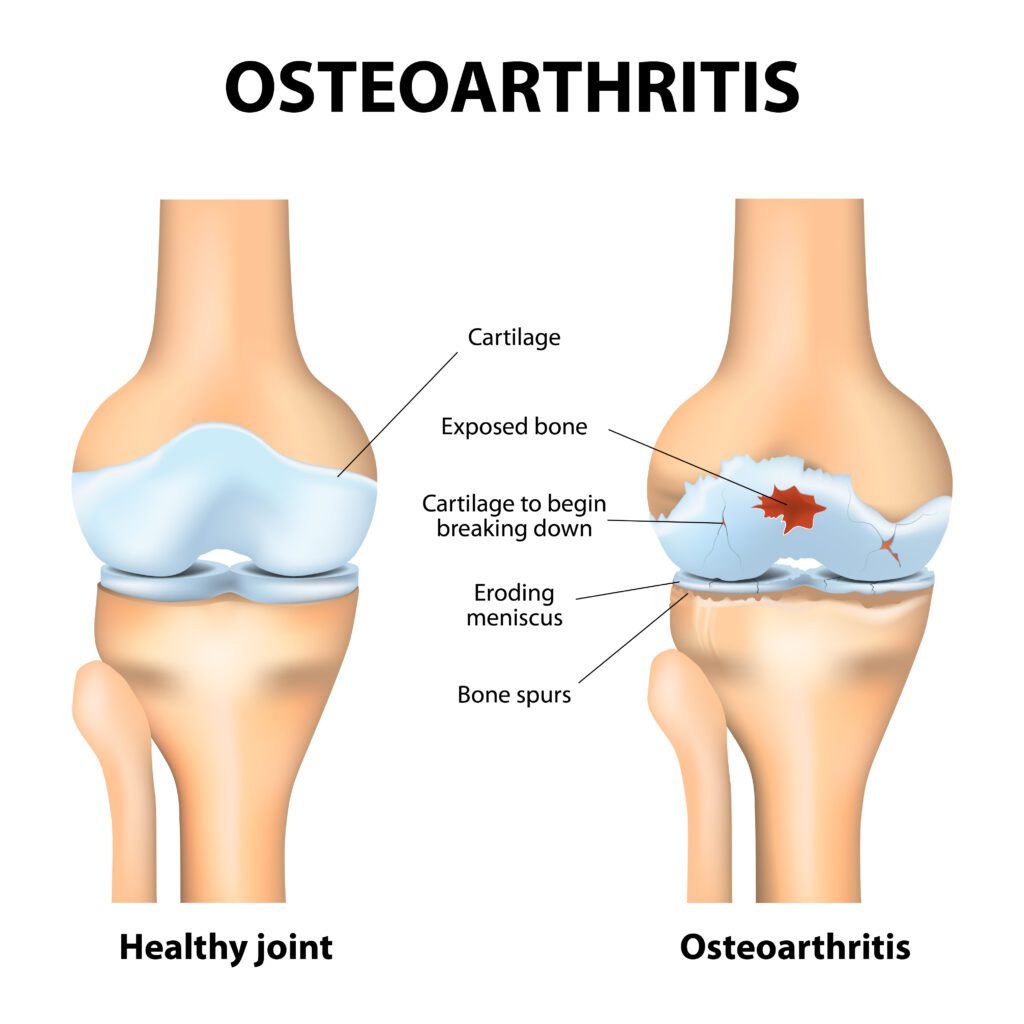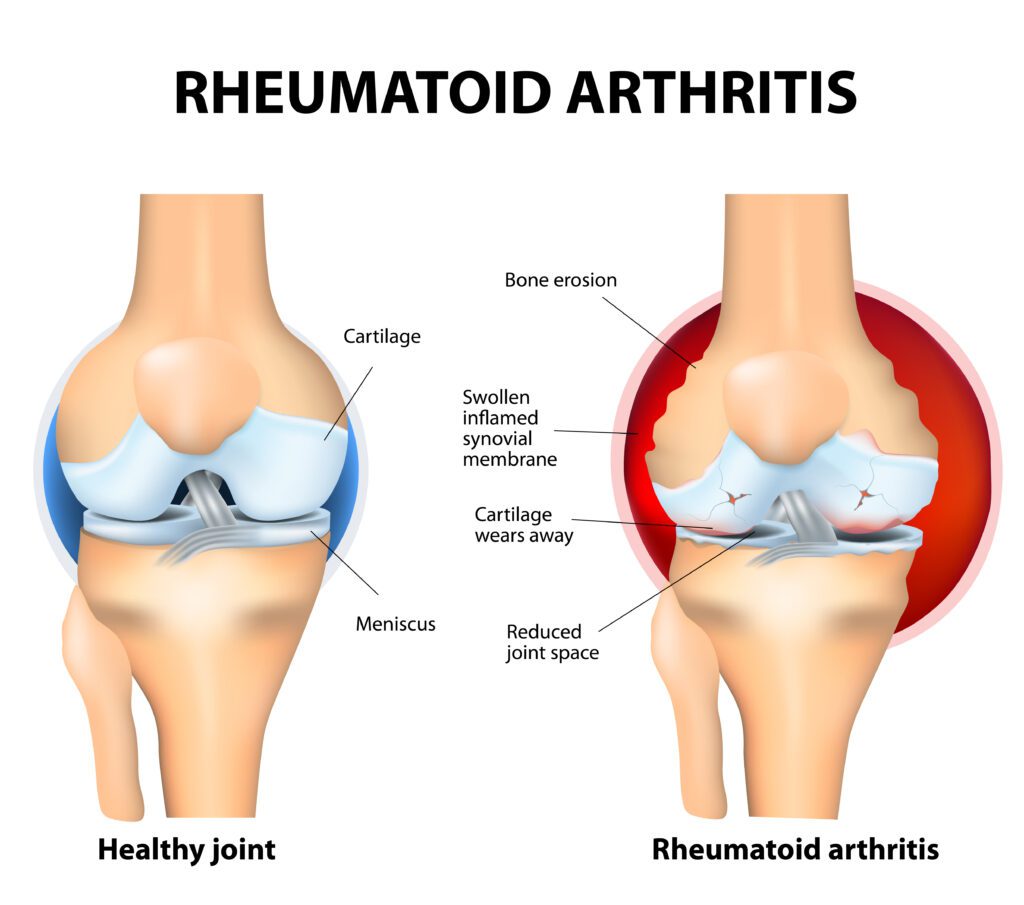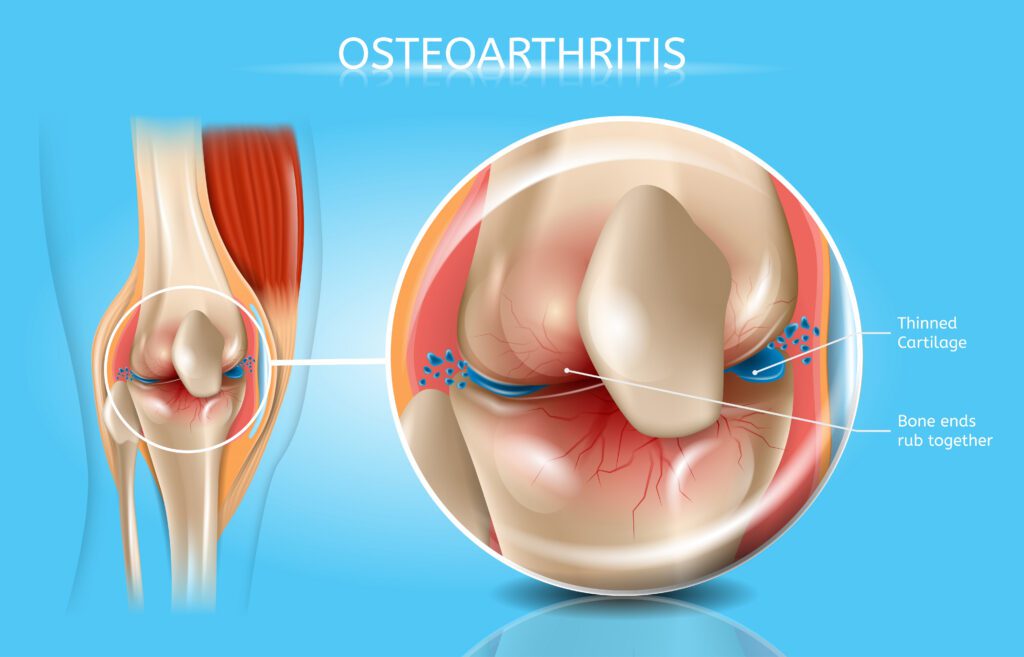Looking for Expert-Level VA Claim Answers?📱Call Us Now! 737-295-2226
In this guide, we’ll explore the 5 best ways to get a VA Rating for Arthritis even if you’ve already filed or been denied VA benefits in the past.
We’ll break down degenerative/osteoarthritis VA ratings, multi-joint/rheumatoid arthritis VA ratings, and post-traumatic arthritis. We’ll also show you what to expect at your arthritis C&P exam, so you can be prepared.
Arthritis VA Ratings can be confusing, so hang with me as I explain how the VA rates Arthritis, and a whole lot of other valuable info about Arthritis VA Disabilities.
Summary of Key Points
-
Arthritis VA ratings range from 10% to 100%.
-
To be eligible for an Arthritis VA rating, you need to have:
-
An official medical diagnosis
-
Proof that your military service caused your Arthritis (or made it worse)
-
Persistent and recurring symptoms
-
-
The VA rates Arthritis under Diagnostic Codes 5002, 5003, 5010, as well as several Limitation of Motion diagnostic codes under 4.71a Schedule of ratings—musculoskeletal system.
-
After filing a VA claim for Arthritis, you may be asked to attend a C&P Exam. It’s important to prepare for and attend your exam.
Table of Contents

You DESERVE a HIGHER VA rating.
Take advantage of a VA Claim Discovery Call with an experienced Team Member. Learn what you’ve been missing so you can FINALLY get the disability rating and compensation you’ve earned for your service.
Arthritis VA Disability Rating: Basic Eligibility Criteria
To be eligible for an Arthritis VA Rating, you must meet three (3) criteria by law:
- Current Medical diagnosis of Arthritis in a medical record (Service Treatment Records, VA medical records, or private medical records).
- Your Arthritis was caused or made worse by your active-duty military service OR by another service-connected disability for secondary service connection. (“Nexus” for service connection)
- Persistent and recurring symptoms of Arthritis (“Severity of Symptoms”) to include functional impairment or loss and how it affects your work, life, and social functioning
If you think you have some type of Arthritis, but don’t have a medical diagnosis, pick up the phone and call the VA health facility nearest you to make an appointment right away!
If you’re trying to increase your VA rating for Arthritis, you need to prove to the VA that your symptoms are now worse and warrant the higher rating criteria by law.
-
Pro Tip: The #1 best way to increase your Arthritis VA rating is to have objective medical evidence (X-rays) to show degenerative or post-traumatic changes with worsening symptoms over time.
Arthritis VA Rating Diagnostic Codes
Arthritis is typically rated under one of three Diagnostic Codes, DC 5003, DC 5002, and DC 5010.
#1. Diagnostic Code (DC) 5003: Degenerative Arthritis

VA ratings for Degenerative Arthritis, also known as Osteoarthritis, are 10% or 20%, depending upon the frequency, severity, and duration of your symptoms as well as “how” those symptoms negatively impact your work, life, and social functioning including any functional impairment or loss.
Arthritis is a musculoskeletal disorder most often rated under CFR Title 38, Part 4, Schedule for Rating Disabilities, Diagnostic Code (DC) 5003, Degenerative Arthritis.
Arthritis can be rated under other Diagnostic Codes (DC) depending on the type and symptoms.
-
Pro Tip: There must be x-ray evidence of Arthritis in the joints to rate under DC 5003.

#2. DC 5002: Multi-Joint Arthritis (Active)
This diagnostic code Includes any Arthritis Diseases that affect multiple joints in the body and could affect other body systems as well, such as:
- Rheumatoid Arthritis
- Psoriatic Arthritis
- Spondyloarthropathies
To be rated under this code, there must be a diagnosis, the Arthritis must be active, and at least TWO joints must be affected.
DC 5002 does not cover post-traumatic Arthritis or gout.
- If the Arthritis is so severe that you cannot function, but are completely incapacitated and bedridden, then it is rated 100%.
- If there is significant weight loss, anemia, and overall severe decrease in health but not complete incapacitation, or if severe incapacitating episodes happen 4 or more times a year, then it is rated 60%.
- If there is a definite decline in overall health, or if incapacitating episodes happen 3 or more times a year, then it is rated 40%.
- If there are one or two episodes a year it is rated at 20%.
-
Pro Tip: Any Arthritis no longer active or less severe than noted above is rated under DC 5003 as Degenerative Arthritis.

#3. DC 5010: Post-Traumatic Arthritis
Post-traumatic Arthritis is caused by an accident or injury (post-trauma).
This condition is rated as limitation or range of motion, dislocation, or instability of the joint affected, whichever one is ratable for that joint and gives the higher rating.
VA Raters must first consider the DC 5200 series to assign a proper rating for Arthritis with limited range of motion.
Multiple VA ratings for a single joint cannot be combined unless the codes specifically state that they can (as is the case for instability of the knee).
Each joint, however, does receive its own VA rating.

How to Prove Arthritis is Service Connected for VA Disability
The VA only rates conditions that were caused or made worse by your service. This is known as “service connection.”
There are three things needed to prove service connection. These three things form what is known as the Caluza Triangle:
- A current medical diagnosis. The VA can’t rate a condition that hasn’t been formally diagnosed by a qualified medical professional.
- Evidence of an in-service event, injury, or illness. You need to have evidence that something happened during and because of your service that caused your disability or made it worse.
- A medical link between #1 and #2. Does the medical evidence suggest that your in-service event, injury, or illness is most likely the cause of your Arthritis? If you get a Nexus Letter, the link will be expressed as one of these statements of probability:
- “Is due to” = 100% certain
- “More likely than not” = greater than 50% certain
- “At least as likely as not” = equal to 50% certain
- “Not likely due to” = less than 50% certain
- “Is not due to” = 0% chance
-
Pro Tip: A Nexus Letter for Arthritis with high probative value is RECOMMENDED to help establish service connection.
Do You Need a Nexus Letter for Arthritis?
Not all VA claims need a nexus letter for the claim to be approved. Here are three questions that can help you decide if you need one:
- Do you have a current diagnosis of Arthritis that was diagnosed while you were still in service and is it in your military medical records along with supporting evidence? If yes, you probably don’t need a nexus letter.
- Are you filing for a secondary claim, or are you filing a claim that was previously denied based on not being service-connected? If yes, you should consider getting a nexus letter.
- Are you filing for a VA rating increase? If so, you don’t need a nexus letter. Since your previous claim was approved, the VA has already acknowledged your condition as being service-connected.

Arthritis VA Rating Charts
| DC 5003, Degenerative Arthritis: | VA Rating |
| Degenerative arthritis established by X-ray findings will be rated based on limitation of motion under the appropriate diagnostic codes for the specific joint or joints involved (DC 5200 etc.). When however, the limitation of motion of the specific joint or joints involved is non-compensable under the appropriate diagnostic codes, a rating of 10% is for application for each such major joint or group of minor joints affected by limitation of motion, to be combined, not added under diagnostic code 5003. Limitation of motion must be objectively confirmed by findings such as swelling, muscle spasm, or satisfactory evidence of painful motion. In the absence of limitation of motion, rate as below: | |
| Arthritis with X-ray evidence of involvement of 2 or more major joints or 2 or more minor joint groups, with occasional incapacitating exacerbations | 20% |
| Arthritis with X-ray evidence of involvement of 2 or more major joints or 2 or more minor joint groups | 10% |
- Note 1: The 20% and 10% ratings based on X-ray findings above, shall not be combined with ratings based on limitation of motion.
- Note 2: The 20% and 10% ratings based on X-ray findings above, shall not be utilized in rating conditions listed under Diagnostic Codes 5013 to 5024, inclusive.
| DC 5002, Multi-Joint Arthritis (Active), 2 or more joints: | VA Rating |
| With constitutional manifestations associated with active joint involvement, totally incapacitating | 100% |
| Less than criteria for 100% but with weight loss and anemia productive of severe impairment of health or severely incapacitating exacerbations occurring 4 or more times a year or a lesser number over prolonged period | 60% |
| Symptom combinations productive of definite impairment of health objectively supported by examination findings or incapacitating exacerbations occurring 3 or more times a year | 40% |
| One or two exacerbations a year in a well-established diagnosis | 20% |
- Note 1: Examples of conditions rated using this diagnostic code include, but are not limited to, rheumatoid arthritis, psoriatic arthritis, and spondyloarthropathies.
- Note 2: For chronic residuals, rate under diagnostic code 5003.
- Note 3: The ratings for the active process will not be combined with the residual ratings for limitation of motion, ankylosis, or diagnostic code 5003. Instead, assign the higher evaluation.
What about DC 5010, Post-traumatic Arthritis?
The Code of Federal Regulations says that the VA must rate Post-traumatic Arthritis as “limitation of motion, dislocation, or other specified instability under the affected joint.”
This means that Post-traumatic Arthritis is rated based on how badly your Arthritis limits your range of motion. Ratings for limited range of motion range from 0% to 100%.
The VA uses several diagnostic codes specific to each region of your body to rate limited range of motion:
- The Shoulder and Arm: DCs 5200-5203
- The Elbow and Forearm: DCs 5205-5213
- The Wrist: DCs 5214 and 5215
- Single or Multiple Digits of the Hand: DCs 5216-5230
- The Spine: DCs 5235-5244
- The Hip and Thigh: DCs 5250-5255
- The Knee and Leg: DCs 5256-5263
- The Ankle: DCs 5270-5274
How Much is an Arthritis VA Rating Worth?
Check out our post 2024 VA Disability Pay Charts to see how much you may get per month from the VA based on your rating percentage and family factors.

What Should I Expect at a C&P Exam for Arthritis?
A VA C&P exam for Arthritis involves a series of verbal questions, including a physical examination and diagnostic testing (X-rays, CT scans, or MRIs, if none have been performed).
-
Pro Tip: C&P Exams are very important. You don’t want to miss your appointment, and you don’t want to show up unprepared.
VA raters place a lot of emphasis on C&P exam results, as well as the examining physician’s notes when determining if your condition is service-connected and what VA rating percentage it may warrant.
The following are common questions asked at a VA C&P exam for Arthritis, based on the DBQ for Arthritis, that you can use to prepare:
- Does the veteran have a diagnosis of Arthritis?
- (If yes, indicate the type).
- Describe the history (including onset and course) of the Veteran’s inflammatory, autoimmune, crystalline, or infectious Arthritis, or decompression illness (brief summary).
- Does the Veteran require continuous use of medication for the Arthritis condition?
- (If yes, list the medication taken for Arthritis).
- Has the veteran lost weight due to the Arthritis condition?
- If yes, provide baseline weight (average weight for the 2-year period preceding the onset of disease).
- If yes, does the Veteran’s weight loss (attributable to the Arthritis condition) cause impairment of health?
- If yes, describe the impairment.
- Does the veteran have anemia due to the Arthritis condition?
- Does the Veteran have any joint involvement (e.g., pain, limitation of motion, joint deformity) attributable to the Arthritis condition?
- If yes, indicate the type:
- Cervical spine
- Thoracolumbar spine
- Sacroiliac joints
- If yes, indicate the type:
- If yes, indicate which side (right or left) and the joint affected:
- Shoulder
- Elbow
- Wrist
- Hand/fingers
- Hip
- Knee
- Ankle
- Foot/toes
- Does the veteran have any involvement of any body systems, other than joints, attributable to the Arthritis condition?
- If yes, indicate the systems involved, and check all that apply:
- Ophthalmological
- Skin and mucous membranes
- Hematological
- Neurological
- Renal
- Gastrointestinal
- Vascular
- Pulmonary
- Cardiac
- Other
- If yes, indicate the systems involved, and check all that apply:
- Due to the Arthritis condition, does the veteran have exacerbations that are not incapacitating?
- Date of most recent non-incapacitating exacerbation
- Duration of most recent non-incapacitating exacerbation
- Describe non-incapacitating exacerbation
- Indicate the frequency of non-incapacitating exacerbations per year (on average)
- Due to the Arthritis condition, does the veteran have exacerbations that are incapacitating?
- If yes, indicate the frequency of incapacitating exacerbations per year (on average)
- Describe incapacitating exacerbation
- Duration of most recent incapacitating exacerbation
- Date of most recent incapacitating exacerbation: < 1 week, 1 week to < 2 weeks, 2 weeks to < 4 weeks, 4 weeks to < 6 weeks, 6 weeks or more.
- Indicate the total duration of incapacitation over the past 12 months.
- If yes, indicate the frequency of incapacitating exacerbations per year (on average)
- Is the veteran’s Arthritis manifested by constitutional manifestations associated with active joint involvement which are totally incapacitating?
- Yes or no
- Is the veteran’s Arthritis manifested by weight loss and anemia productive of severe impairment of health?
- Yes or no
- Is the veteran’s Arthritis manifested by severely incapacitating exacerbations occurring four or more times a year, or a lesser number over a prolonged period?
- Yes or no
- Is the veteran’s Arthritis manifested by symptom combinations productive of definite impairment of health, objectively supported by examination findings?
- Yes or no
- Due to the veteran’s Arthritis condition, is there functional impairment of an extremity such that no effective function remains, other than that which would be equally well-served by an amputation with prosthesis? (Functions of the upper extremity include grasping, manipulation, etc., while functions for the lower extremity include balance, propulsion, etc.)
- Yes, functioning is so diminished that amputation with prosthesis would equally serve the Veteran
- No
- If yes, indicate extremities for which this applies: Right upper, Left upper, Right lower, Left lower
- For each checked extremity, identify the condition causing loss of function, describe the loss of effective function, and provide specific examples (brief summary):
- Have imaging studies been performed in conjunction with this examination?
- Yes or no
- Was Arthritis documented?
- Yes or no
- If yes, indicate the type and results.
- Regardless of the veteran’s current employment status, do the conditions listed in the diagnosis section impact his/her ability to perform any type of occupational task (such as standing, walking, lifting, sitting, etc.)?
- Yes or no.
- If yes, describe the functional impact of each condition, providing one or more examples
Is Arthritis a Presumptive Condition?
Yes. Arthritis is a chronic condition and is included on the VA’s list of presumptive conditions.
Presumptive conditions are conditions the VA assumes were caused or made worse by your service. If you have a condition on the VA’s presumptive list, you don’t have to prove service connection. You only need to meet the service requirements.
Service Requirements for Presumptive Arthritis
Service requirements for presumptive Arthritis depend on which presumptive category you fall under.
There are ten categories:
- Prisoners of War (POW)
- Chronic Debilitating Diseases
- Tropical Diseases
- Agent Orange (Herbicides) Exposure
- Asbestos Exposure
- Radiation Exposure
- Mustard Gas or Lewisite Exposure
- Camp Lejeune Water Contamination Exposure
- Gulf War Syndrome
- Burn Pits and Particulate Matter Exposure
Arthritis is found in the POW and Chronic Debilitating Diseases categories.
POW Service Requirements
If you were a Prisoner of War for any length of time during your military service, the VA may consider your Arthritis presumptive.
Chronic Debilitating Diseases Service Requirements
If your Arthritis was diagnosed within 365 days of discharge from active duty, then it’s presumed to be caused by military service and therefore eligible for VA disability benefits as a presumptive condition.
How Avoidance of Pyramiding Impacts Arthritis Claims
Generally, Arthritis, including Osteoarthritis, is rated under Diagnostic Code (DC) 5003, Degenerative Arthritis, with VA ratings of either 10% or 20%, depending on the number of joints impacted and whether there are occasional incapacitating episodes.

However, the most common VA disability rating for Arthritis is under “joint conditions” as Limitation of Range of Motion.
Why?
Because joint conditions are required to be rated under Limitation of Range of Motion first before they can be rated as Degenerative Arthritis.
Degenerative Arthritis can only be rated under a separate Diagnostic Code (DC) if it does not cause Limitation of Range of Motion in a joint.
This is important to understand.
If any condition, such as symptoms of Arthritis, cause a decreased range of motion in a joint, then it must be rated on Limitation of Range of Motion, not as Arthritis.
Conditions cannot be rated under both Limitation of Range of Motion and Degenerative Arthritis due to the avoidance of pyramiding so, Limitation of Range of Motion first, and if not, then only Arthritis.
Frequently Asked Questions (FAQs)
What is the Osteoarthritis VA disability rating?
Osteoarthritis is a type of degenerative joint disease rated under Diagnostic Code (DC) 5003, Degenerative Arthritis, with VA ratings of either 10% or 20%, depending on the number of joints impacted and whether there are occasional incapacitating episodes.

What is Arthritis in veterans?
Arthritis is the swelling and tenderness of one or more joints. The main symptoms of Arthritis are joint pain and stiffness, and generally worsen with age. While there are many different types of Arthritis, the most common types are OsteoArthritis and Rheumatoid Arthritis. Osteoarthritis causes degenerative changes to the cartilage whereas Rheumatoid Arthritis is a disease whereby the immune system attacks the joints.
According to the Mayo Clinic, there are nine main types of Arthritis:
- Ankylosing spondylitis
- Gout
- Juvenile idiopathic Arthritis
- Osteoarthritis
- Psoriatic Arthritis
- Reactive Arthritis
- Rheumatoid Arthritis
- Septic Arthritis
- Thumb Arthritis
Signs and symptoms of Arthritis in veterans include:
- Joint pain
- Stiffness
- Swelling
- Redness
- Decreased range of motion
- Painful motion
What is the highest VA rating for Arthritis?
The highest possible VA rating for Arthritis is 100% for Spinal Arthritis that affects your entire spinal column.
This rating is available through the General Rating Formula for Diseases and Injuries of the Spine under Unfavorable ankylosis (limited range of motion) of the entire spine.
You can also get a 100% Arthritis VA rating under DC 5002 for totally incapacitating Arthritis that affects multiple joints.
A VA rating for Rheumatoid Arthritis can be awarded under Diagnostic Code 5003, as well as a Psoriatic Arthritis VA rating.
What is the average Arthritis VA rating?
The VA doesn’t publish average ratings for specific disabilities. However, what we can say is that as of 2023, the VA has awarded nearly 7 million ratings for “Limitation of motion of a joint or appendage.” This category includes ratings for Arthritis.
Is there a C&P Exam for Arthritis?
If you submit a VA claim for Arthritis, it’s possible the VA will require you to attend a C&P Exam.A Compensation and Pension Exam (C&P Exam) is one of the most important parts of the VA claims process. During the exam, a VA physician or VA-contracted physician will ask you several questions to help the VA determine whether your condition is service-connected and what rating it may warrant.
VA Raters place a lot of weight on the results of C&P Exams, as well as the examining physician’s notes. It’s very important that you show up to your C&P Exam for Arthritis prepared and ready to answer many questions.
Read our post 10 EXPERT Tips to DOMINATE Your C&P Exam: The Ultimate Guide for guidance.
Can you get a VA rating for Arthritis in your hands?
Yes, Arthritis in the hands can be rated under Diagnostic codes 5002, 5003, 5010, or under Single or Multiple Digits of the Hand (DCs 5216-5230).
What is the reasonable doubt rule for Arthritis?
The reasonable doubt rule, also known as the Benefit of the Doubt Doctrine, means that the evidence provided by the claimant/beneficiary (or obtained on his/her behalf) must only persuade the decision maker that each factual matter is “at least as likely as not.” This means there’s at least a 50/50 chance.
When, after careful consideration of all evidence, a reasonable doubt arises regarding service origin, the degree of disability, or any other point, such doubt will be resolved in favor of the claimant. The courts further likened the reasonable doubt rule as akin to the principle in baseball that the “tie goes to the runner.” When in doubt, the benefit is ALWAYS given to the veteran.
Independent providers and C&P examiners must consider and give weight to the veteran’s self-reported symptoms when completing their DBQ for Arthritis conditions. However, objective medical evidence, such as X-rays, is required before awarding disability for Arthritis.
How does the VA rate Arthritis due to strain?
§ 4.58 Arthritis Due to Strain.
The VA considers Arthritis linked to leg amputation service-connected if it’s in the amputated leg or both legs, worse because of the amputation, and affects specific joints. Other Arthritis isn’t service-related. Upper limb injuries don’t cause Arthritis, except in strained or injured joints, which needs separate evaluation.
How does painful motion impact Arthritis VA ratings?
When painful motion occurs alongside Arthritis, painful facial expressions, wincing, etc., on pressure or movement of the joint, is carefully noted by VA raters. They also take note of reports of muscle spasms.
During the VA rating process, your affected joint(s) could be tested for pain on both active and passive motion, in weight-bearing and non weight-bearing and, if possible, tested in comparison to the range of motion of the opposite, undamaged joint
How does the VA rate Arthritis with joint pain?
For a joint or group of joints affected by degenerative Arthritis (or a condition evaluated using the degenerative Arthritis criteria), the VA first evaluates you for a rating according to limited range of motion. When VA Raters assign a rating for issues with range of motion in a joint, they consider the following factors:
- Less movement than normal
- More movement than normal
- Weakened movement
- Excess fatigability
- Incoordination, impaired ability to execute skilled movements smoothly
- Pain on movement, swelling, deformity or atrophy of disuse
NEED MORE ASSISTANCE?
Most veterans are underrated for their disabilities and, therefore, not getting their due compensation. At VA Claims Insider, we help you understand and take control of the claims process so you can get the rating and compensation you’re owed by law.
Our process takes the guesswork out of filing a VA disability claim and supports you every step of the way in building a fully-developed claim (FDC)—so you can increase your rating FAST!
If you’ve filed your VA disability claim and have been denied or have received a low rating—or you’re unsure how to get started—reach out to us! Take advantage of a FREE VA Claim Discovery Call.
Learn what you’ve been missing—so you can finally get the VA rating you deserve.
About the Author

Brian Reese
Brian Reese is a world-renowned VA disability benefits expert and the #1 bestselling author of VA Claim Secrets and You Deserve It. Motivated by his own frustration with the VA claim process, Brian founded VA Claims Insider to help disabled veterans secure their VA disability compensation faster, regardless of their past struggles with the VA. Since 2013, he has positively impacted the lives of over 10 million military, veterans, and their families.
A former active-duty Air Force officer, Brian has extensive experience leading diverse teams in challenging international environments, including a combat tour in Afghanistan in 2011 supporting Operation ENDURING FREEDOM.
Brian is a Distinguished Graduate of Management from the United States Air Force Academy and earned his MBA from Oklahoma State University’s Spears School of Business, where he was a National Honor Scholar, ranking in the top 1% of his class.




